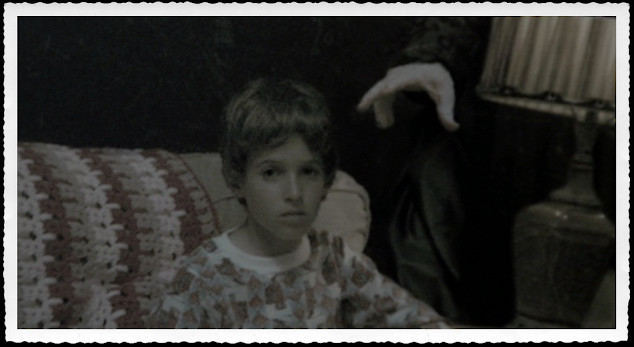I tend to buy books in bulk. It’s an impulse that I can’t control, which I’m fine with. In my estimation, a person can never have too many—unless of course they begin to line the walls in stacks and cover every inch of free space. I haven’t reached that stage yet, so I’m still good.
I mention this because by the time I finally picked up and read Miss Peregrine’s Home for Peculiar Children after having bought it months ago, I had completely forgotten what it was about. All I remembered at the time, before I began reading, was that the book made use of strange, vintage photographs from the early party of the 20th century, which were woven through the story to add visuals of our characters where possible.
So with only that knowledge in mind, I began to read.
Admittedly, the story did not immediately grab me—at least not in the way I wanted to be grabbed. Based on the cover of the book – and the gimmick of these old photos – I wanted something creepy. I wanted a tale about unnerving, diabolical children. I wasn’t even sure I wanted a strict narrative. Because of my obsession with true crime material, I probably wanted a dossier-like account of these children and what it was that made them so peculiar (read: deadly); and with their photos would come their names, their origins, under what circumstances they had become institutionalized in Miss Peregrine’s home…and in what foul ways they had murdered their victims.
What I got instead was Peter Pan meets X-Men.
Because of this, I admit to being disappointed throughout the first act of the book, yet continuing to read, anyway. The book focused more on fantasy and adventure than horror (not that I'm not adverse to those former two, mind you, but when you're expecting horror, you want horror), and so I was tempted to tune out. I was glad I didn’t, however, as the story eventually hooked me.
Our first-person narrator is sixteen-year-old Jacob Portman. His relationship with his grandfather is paramount, and when the old man tragically dies – possibly at the claws of a monstrous creature – Jacob is shattered. As the boy sits next to his dying grandfather, the old man uses his last breath to mutter to Jacob random phrases, seemingly incoherent and without meaning.
No one believes Jacob about the animal he believes was the result of his grandfather’s demise, telling him it was most likely a wild dog, so he begins his own investigation into what may have happened—and what the old man’s last words were all about.
One thing leads to another and Jacob finds himself on a faraway island, accompanied by his father, to learn more about the time his grandfather had spent there as a boy—living in an orphanage headed by Miss Peregrine.
There Jacob meets all manner of peculiar children with an array of peculiar talents. They shoot bees from their mouths, float effortlessly above the ground as if filled with helium, give life to inanimate objects using animal hearts; one child is outright invisible. Among them is Emma, a girl with whom Jacob will grow undeniably – and uncomfortably – infatuated.
What immediately strikes you about the book is how realistically it’s written, even as the events become more and more fantastical to the point of bordering on cornball. The story honestly feels like absurdly embellished memoirs instead of a traditional novel. Specific traits and interests, and even weaknesses and flaws, are added to different characters, fleshing them out and making them feel as if they are based on real people.
The real draw to me was the budding relationship between Jacob and Emma, which effortlessly made me recall my own romances from that age—something that still fills me with both fondness and regret. Without giving much away, Jacob does his best to resist falling for Emma, though they had already shared a very complicated relationship before ever meeting each other.
My only real gripe with the book has to do with its main selling point—the photographs. While the majority of the photos do add to the story, some do not, and at times felt like they were crammed into the book by the author with their inclusion being explained by some "Family Guy"-ish “remember that time?” anecdotes. I can understand having access to such strange and fascinating photos and wanting to use them, but some could easily have been excised and not affected the story. Not to mention that the placement of the photos also throws off the formatting of the book. In some cases, there may only a single paragraph on an entire page, because a photo will take up all of the following one. It’s a minor gripe, but after a while this choice interrupts the flow of the story
The book was a quick and easy read, and I’m glad I persisted on following it to the end, even after part of me had checked out. It was equal parts amusing, saddening, and unusual.
While the book's main conflict is resolved, it is clearly set up for further adventures. From what I understand, author Ransom Riggs has not announced any kind of sequel, but in this day and age when serialized young adult lit is huge, I wouldn't be surprised if he has the next three books outlined in his mind already.
It was recently announced that Tim Burton will be bringing Miss Peregrine’s Home for Peculiar Children to the bring screen. While I wish the man would direct a movie based on one of his own original scripts again (which is when we get stuff like Edward Scissorhands and Beetlejuice), I have to admit this book is pretty much perfect for his fixation on Gothic visuals and dour characters.
Also, five bucks says Helena Bonham-Carter plays the titular role.






































